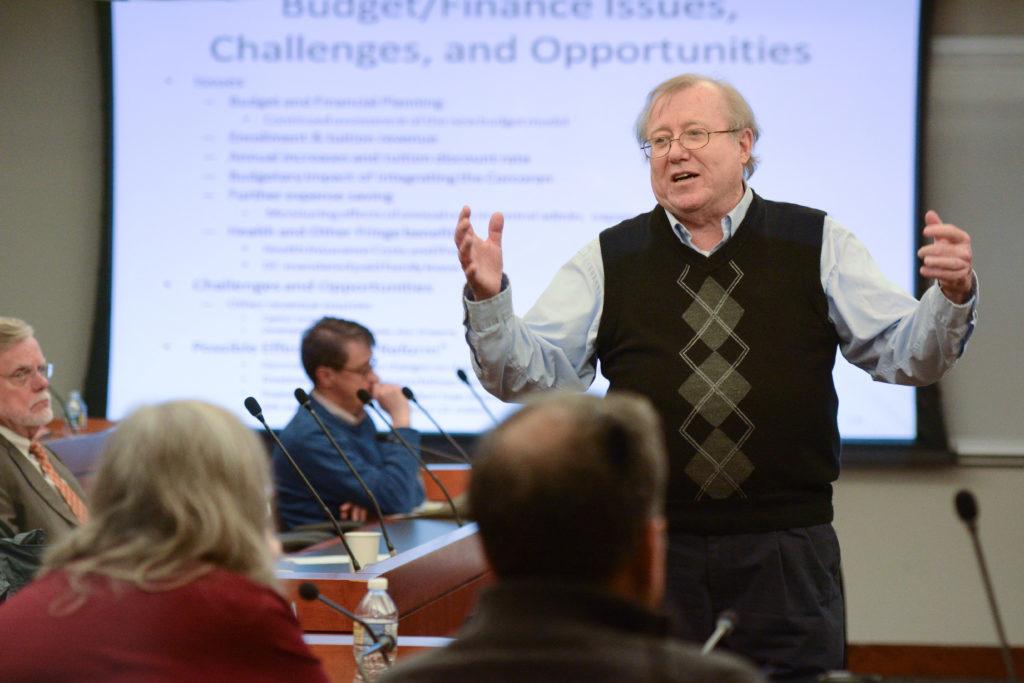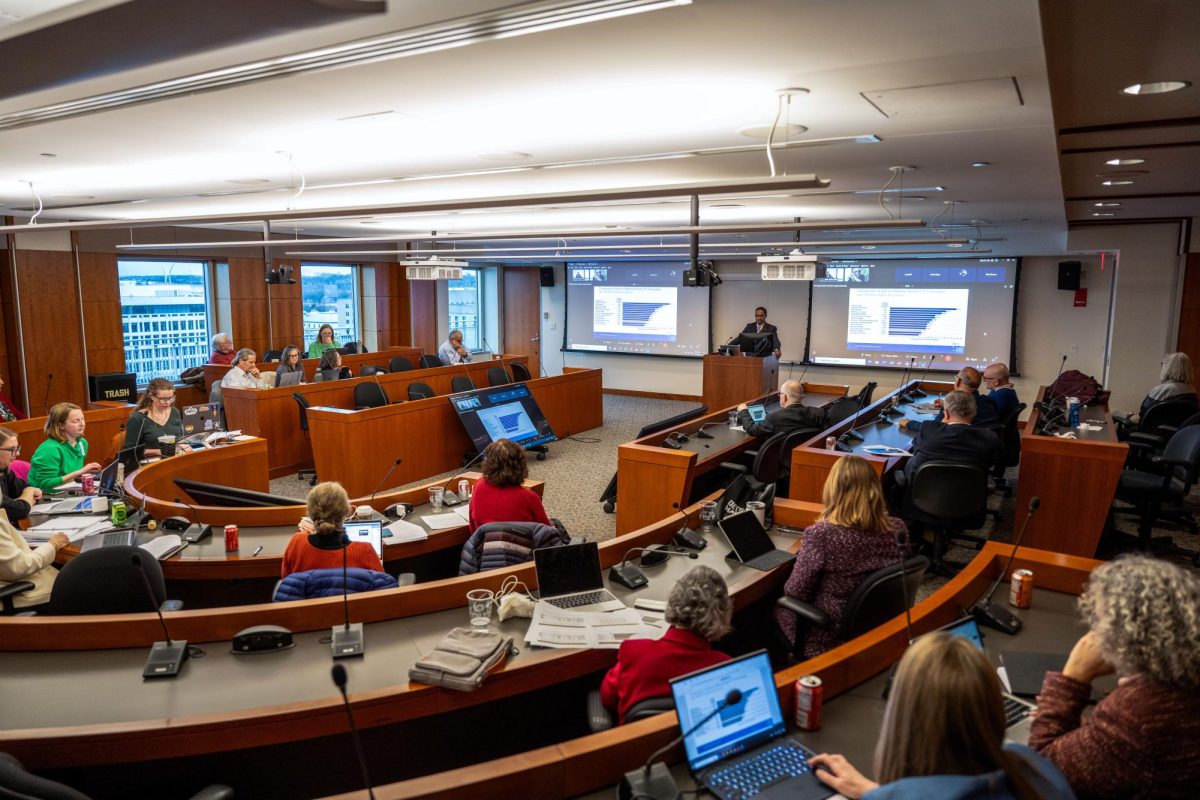Updated: Nov. 16, 2017 at 10:57 a.m.
The University had its strongest financial performance in years last year, but faculty and officials say it’s not likely to become a trend.
GW ended fiscal year 2017 in June with a $100 million surplus, driven by a sharp 10 percent rise in revenue with only a small increase in expenses. Faculty and officials attributed the increase to spending cuts made over the last few years and an increase in enrollment, but said financial growth is likely to slow as the University faces enrollment caps and limited tuition hikes.
Joseph Cordes, an economics professor and the chair of the Faculty Senate’s finance committee, said during a finance presentation to the Faculty Senate Friday that the success of fiscal year 2017 was an outlier. He said the increase was caused by an $18 million cash infusion to the Medical Faculty Associates, a physician group affiliated with the medical school and GW Hospital, announced in November 2016.
Cordes said after years of anxiety about the University’s financial standing, last year was an indication that officials had reversed the previous downturn. Officials approved increased spending for travel and salaries in fiscal year 2018 after spending was slashed over the last few years, according to the presentation.
In 2014, a drop in graduate school enrollment sparked a prolonged financial slump. To combat sinking revenue, former University President Steven Knapp announced five years of 3 to 5 percent budget cuts to central administrative units.
Last fiscal year was the first since 2012 that GW has operated on a surplus, a trend Cordes said is likely to continue over the next few years, but growth is not expected to be as robust with projected surpluses ranging between $40 and $60 million over the next five years.
“We’re still in favorable territory,” he said during the presentation.
GW’s endowment also rose 10 percent last fiscal year, driven by growth in the University’s non-real estate investments.
Cordes said the planned redevelopment of 2100 Pennsylvania Ave. into an investment property is another opportunity for the University to increase revenue without raising tuition. The development project was announced in December.
Creditors Moody’s and Standard and Poor’s rated GW with an A+, the third-highest rating, finding that GW had diverse revenue streams, despite its reliance on tuition to fund about 70 percent of its operating budget. But the creditors also expressed worries about GW’s relatively high debt load.
Last year, the debt reached about $1.7 billion, but the University retired more than $150 million in debt in September.
Ann McCorvey, the deputy executive vice president and treasurer, said expenses could rise after budget cuts expire in 2019, but revenues will still outpace expenses. Tuition revenue, which supports most of the University’s $1 billion operating budget, will continue to increase, she said.
She agreed that the University’s future financial growth is likely not to keep pace with last year, but said officials still anticipate a favorable financial outlook.
“Could there be years where our margins will vary, yes,” she said in an interview. “I think you’re going to see us aim for 3 to 5 percent.”
Provost Forrest Maltzman said the University has been able to turn around financial woes by growing enrollment over the last few years. Officials have reversed graduate program declines and accepted more undergraduate students to boost tuition revenue.
He said investments in new residence halls and academic centers like the $275 million Science and Engineering Hall have made the University more attractive to prospective students.
“This is the hay day of urban education,” he said at the meeting. “People actually want to be here.”
But Maltzman said revenue growth will be restricted over the next few years because the University is approaching campus enrollment caps and officials can only approve modest increases in tuition because many families are already struggling to afford a GW education.
University President Thomas LeBlanc said even though GW is a non-profit, it is not unusual for a university to operate on a surplus to ensure it can dole out funds to grow its academic offerings. But LeBlanc said growth in fiscal year 2017 was likely not sustainable.
“We had to get on the normal path, fiscal year 2018 is kind of on normal path,” LeBlanc said.
LeBlanc defended the University’s use of debt, saying it is often dedicated to major capital projects that eventually pay for themselves. He said the University would consider taking out more debt in the future to fund projects like an eventual overhaul of Thurston Hall, which he said was needed within the next few years.
LeBlanc said the University was fortunate to have the extra resources accumulated in fiscal year 2017 because it provides extra flexibility.
“Ideally we will produce positives and serve as rainy day funds,” he said.
Gabriel Serna, a professor of higher education administration at Virginia Tech University, said a $100 million surplus is almost unheard of for a nonprofit university.
“Most universities have nothing near that,” he said. “Fifty million dollars, that’s unusual to have such a surplus particularly when you’re talking about budget cuts of your budget model.”
Between fiscal years 2018 and 2022, the University is projected to make an average of roughly $55 million each year, according to projections in the presentation. Serna said that number is still unusually high, especially given the ongoing administrative budget cuts.
Serna said cuts as steep as 3 to 5 percent for five years seem unnecessary if the University is racking up a multi-million-dollar surplus.
“I don’t know why you would put that much money in a rainy day fund,” he said.
This post was updated to reflect the following correction:
The Hatchet incorrectly reported Joseph Cordes’ title. He is the chair of the Faculty Senate’s finance committee. It is now correct. We regret this error.





